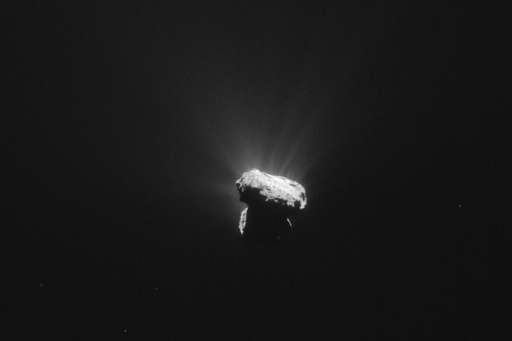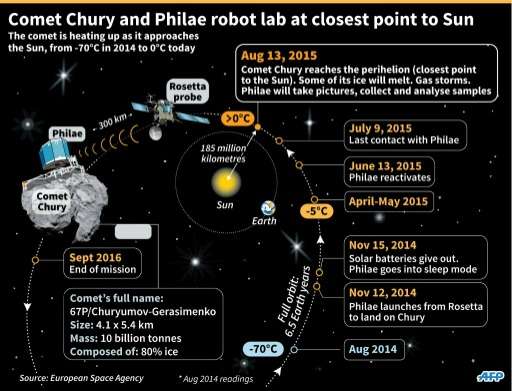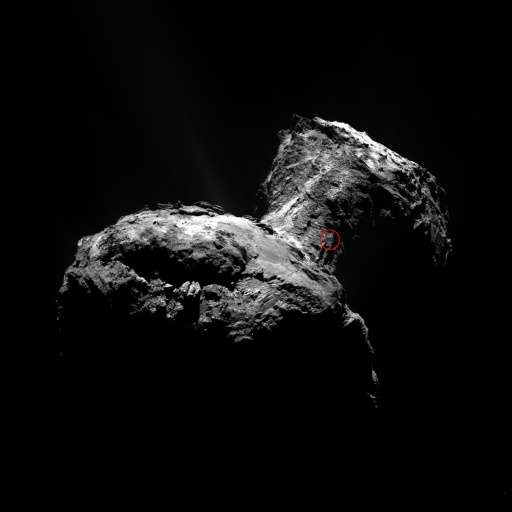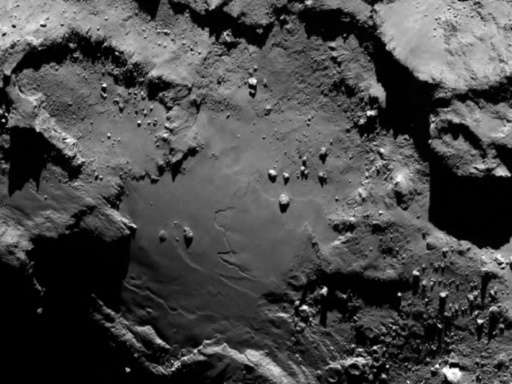Rosetta hits 'milestone' in comet's run past Sun

The European space probe Rosetta captured a range of scientific data Thursday as it trailed an ancient comet past the Sun which could help scientists better understand the origins of life on Earth.
During its run before the Sun the probe collected particles and gas put off by the comet 67P/Churyumov-Gerasimenko as it delivered a solar heat-driven fireworks show of gas jets and shed about a tonne of dust per second.
The samples as well as images Rosetta took of the comet as it came within 186 million kilometres (116 million miles) of the Sun at about 0200 GMT will be analysed in the coming weeks and months, the European Space Agency said.
"It's really a fantastic milestone that has been achieved by Rosetta today," Nicola Altobelli, acting Rosetta Project scientist, said during a online presentation marking the occasion.
"Beyond the obvious scientific achievement, it was also technically a masterpiece in space engineering," he added.
However, project scientists said the washing machine-sized lander Philae—sent to 67P's surface last November—remains incommunicado, with some of its equipment not working properly any longer.
Experts, however, sounded a hopeful note that the lander could wake up again and transmit scientific data as well as images from the surface of the comet to Rosetta.
Pictures taken from Rosetta's navigation camera showed that 67P was "very active" as its surface was buffeted by solar wind and heat, said Sylvian Lodiot, the engineer in charge of the spacecraft at ESA's European Space Operations Centre in Germany.

"There are jets of gas and dust just about everywhere," he told AFP.
Rosetta, which continues to shadow the comet on its 6.5 year orbit around the Sun, "is working perfectly," he added.
'Quite worrying'
During the 67P's solar swingby, Rosetta retreated to a safe distance of 330 kilometres (200 miles) to protect its star tracker navigation system from the debris.
The comet is made up of minerals, ice and—most critically for scientists—organic molecules that may have been similar to the precursors that kick-started life in Earth's early oceans.
"In looking at this comet—a step in that process of understanding —we are trying to understand why our system turned out the way it did, why Earth had stable water, and the ingredients that led to what we are today, that is a planet of living beings," astrophysicist Jean-Pierre Bibring of the Institute of Space Astrophysics told radio France Inter on Thursday.
Scientists hope the heat of perihelion—when the comet comes closest to the Sun in its orbit—will have caused the lifeless voyager to shed a significant layer of its icy crust.

If so, it will disgorge some of these pristine particles left from the solar system's birth about 4.6 billion years ago.
Yet it is not clear if the lander Philae will help unravel the mystery.
"We have not heard from Philae in more than a month and that is quite worrying," Barbara Cozzoni, a lander engineer, said during the online presentation.
She noted one of the reasons Philae may have been out of contact so long is that its transmission equipment has been steadily degrading.

One transmitter is out of commission and two receivers are not working properly.
"We are here we are working, we are trying to find a work-around to the situation. We are working hard to get some science from Philae," Cozzoni added.
The lander, which runs on solar power, has the energy it needs to operate through October, but after that days will start getting shorter and the robot lab could run short of power.
© 2015 AFP


















